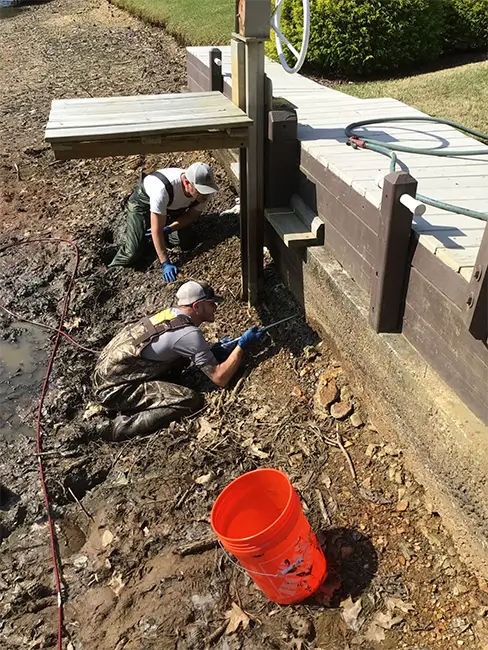
Seawall Repair Material
Bulkheads and seawalls play a crucial role in protecting coastlines from erosion and flooding. However, these structures are not immune to damage caused by constant exposure to the elements. Over time, bulkhead concrete can deteriorate, leading to cracks, weakened foundations, and compromised structural integrity. This article explores the causes of bulkhead concrete damage and the most effective repair option.
Causes of Bulkhead Concrete Damage
Several factors contribute to the deterioration of bulkhead concrete. Waves, tides, and extreme weather events constantly impact these structures, causing wear and tear. Hydrostatic pressure from water accumulation behind the bulkhead can also lead to cracks. Additionally, soil erosion gradually destabilizes the seawall’s foundation, further compromising its strength and stability.

Repair Options for Damaged Bulkheads
When faced with bulkhead concrete damage, property owners have several repair options to consider. A complete or partial rebuild may be necessary in severe cases, but this approach is often costly and time-consuming. Traditional repair methods using cement grout can be labor-intensive and prone to shrinkage and degradation over time. An alternative solution is the use of a high-density structural polymer, such as Seawall Repair Network®’s SW-RP1. This material fills voids caused by soil erosion, solidifies the soil, and restores structural integrity.
Benefits of Structural Polymers
Using a structural polymer for bulkhead concrete repair offers several advantages. The material’s durability ensures long-lasting results, reducing the need for frequent maintenance. The material is also environmentally friendly and safe for marine life. The repair process is non-invasive and efficient, causing minimal disruption to the surrounding environment. Additionally, polymer foam repair is cost-effective, with property owners potentially saving up to 80% compared to the expenses associated with complete bulkhead replacement. The repair process is also much quicker, minimizing inconvenience and allowing for a prompt return to normal function.
Get Free Quote We Are Proud Affiliates Of: Table of Contents The problem of sinking concrete along the coast of Florida...
We Are Proud Affiliates Of: Table of Contents Coastal barriers are needed to safeguard structures and populations from the continuous impact...
We Are Proud Affiliates Of: Whether it is your driveway, walkway, or patio, uneven or sunken concrete surfaces are both an...
We Are Proud Affiliates Of: One of beachfront owners’ concerns in the Florida Panhandle is coastal erosion, as the waves and...


